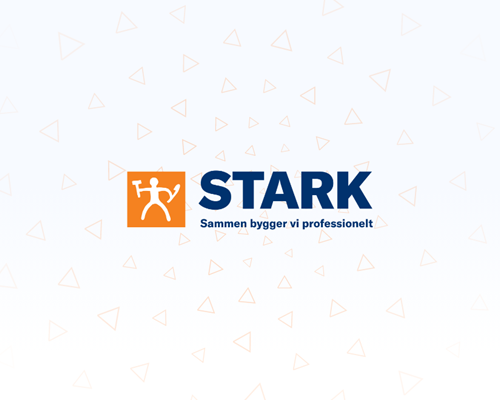How to manage 623,000 item numbers
Peter Grønbæk
8 min read

“I am so fed up with passing around spreadsheets,” was the reply from one of our customers. That was before they embarked on the digital transformation of Encodify’s Supplier Portal.
The outbreak affects many supply chains — either through unexpected increases or drop-offs in demand and supply shortages. Large-scale businesses are now faced with a new urgency: the need to create digital connectivity with every supplier in their business circle. Still, we find ourselves manually sending e-mails with attached Excel spreadsheets and product updates. And a recent report reveals that getting truly connected and digitized in your workflow management is still an uphill battle.
“I am so fed up with passing around spreadsheets”, was the reply from one of our customers. That was before they embarked on the digital transformation of Encodify’s Supplier Portal. It’s a game-changer if your company’s view of a digital workflow is based on e-mail correspondence. How about managing your workflow without the constant exchange of e-mails and attachments?

Although many companies recognize the value of an end-to-end integrated planning approach, they still have a long way to go to create one.
The need for speed
Speed, agility, and flexibility are showing up in business conversations everywhere these days. The three words stand out like neon glitter in a Las Vegas night. And a worldwide pandemic has suddenly added more gas to the neon signs. There is an immediate need for a digital transformation was the conclusion in a recent research report out by PwC, and at Encodify, we tend to agree. And we tend to think we offer the solution, too.
“We are talking about a platform that eventually takes over the flow of communication,” says Peter Grønbæk, Customer Success Director at Encodify. And he elaborates on how the supplier portal is dramatically changing the workflow management at a number of large retailers in Europe.
“The supplier portal is practically running the campaign from start to finish. It’s like an ecosystem where a business can grant access to suppliers without having to worry what happens with the progress of a campaign, an order, a copy, etc. if someone on the team has a sick day,” explains Peter Grønbæk and points to a large Danish retailer, STARK, which is a leading retailer and distributor of building materials.
A win-win situation
The supplier portal connects the digital assets, and it manages a workflow where commands are carried out automatically. Suppliers will be able to load their own information into the portal - no need to send spreadsheets back and forth. On the other end, the retailer will spend far less manpower on receiving, administering, and loading this kind of information. It has been done already. For instance, product updates can be reported directly to the platform, and all relevant people will be digitally notified. As such, the supplier portal supports both the retailer and its suppliers.
Peter Grønbæk calls it a win-win situation.

It’s actually a really complex process when you want to exchange information, upload pictures and videos, align pricing, and much more. Traditionally, the information would get lost or jumbled along the way because you have a large number of people working from their individual screen. With the supplier portal, you suddenly have everyone involved looking at the same screen in real-time
The case of STARK
These days, the challenge for any company is how to connect as much and as many to a central platform that will be a more transparent and efficient tool for everyone to use, thus leveraging the competitiveness of all companies involved. Take the Danish retailer STARK which has embarked on a transformation that would make you dizzy just studying the number of items on their shelves. But instead of dizziness, the 1 billion US$ retailer is applying Encodify’s supplier portal and experiencing a clearer picture.
“They have 623,000 items for sale and thousands of suppliers. To sell the products, they need product descriptions, copywriting, pictures, videos, graphics, manuals, marketing descriptions, and so much more. And our main priority is to make life easier for our customers,” says Peter Grønbæk, a Business Director within our retail team.
And so, STARK has been using the supplier portal to integrate their suppliers and make life easier. Now, a supplier has direct access to STARK through the supplier portal, and it is in real-time.
“The suppliers log into the system alongside STARK. They don’t need to ship product information or other data sources back and forth through e-mails. And if something in STARK’s promotion is misspelled or has the wrong information, the supplier can amend it directly within the supplier portal,” explains Peter Grønbæk and elaborates on the results this far in the transformation process at STARK:
“Our data shows that the suppliers actually use the portal. They have embraced the digitalization of their B2B retail business relation, and they see the benefits of the supply chain ecosystem. It is very promising for both parties,” says Peter Grønbæk.
STARK has this far involved 100+ of their suppliers in their digital transformation.
Is your supply chain truly digital?
During the corona crisis, PwC has released a research report about the digital marketplace that, ironically almost, highlighted the immediate need for digital transformation in medium to large-scale companies. Especially within business areas that rely heavily on logistics and multiple suppliers.
“Rather than a linear chain, where data is transferred from one stage to the next, data is available continuously throughout the supply chain, now more accurately termed a supply chain ecosystem, giving partners near-real-time and simultaneous access to relevant information and enabling optimized and informed decision- making.”
In short, the findings among 1.412 global companies across 33 countries were like a finger-wagging at the majority of businesses to get truly digital and transform their supply chains.
The supplier portal at Encodify is a truly digital supply chain. It has all the earmarks of the supply chain ecosystem, but its focal point is content production and campaign planning.
Getting digital at the supply chain
For a retailer like STARK, there is obviously a need to get the supply chains more integrated. It’s a way to alter the workflow management because it has a considerable impact on your time to market.
“We work with retailers a lot these days since the big companies rely tremendously on logistics, data transfers, and optimized workflow,” says Peter Grønbæk. His experience at Encodify goes back 13 years, but the business world has become more complex and fast-moving. Thus, the need for a platform that can bring together everyone involved in a campaign is greater than ever.
“Some of these retailers are huge organizations. And you might see parts of a business strategy included in a company’s strategic approach 10 years ago which has yet to be implemented. The reason is the speed of the digitalization.”
And one key component in the digitization process lies with workflow management. At the heart of becoming truly digital while managing the workflow lies innovation. At Encodify, the innovation is called The Supplier Portal, and it has proven a considerable success for medium to large-sized companies, especially within retail.











